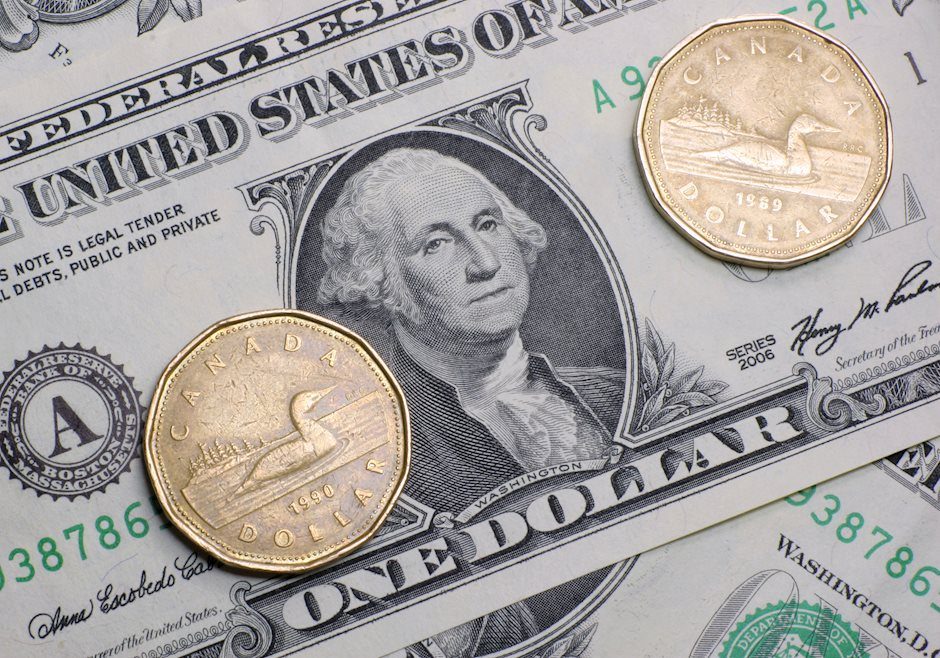USD/CAD struggles to gain ground near 1.3750 on higher crude oil prices, eyes on US PPI data
- USD/CAD trades with mild gains around 1.3740 in Tuesday’s Asian session.
- Traders await the US PPI data on Tuesday for fresh impetus.
- Higher crude oil prices and hopes of a Fed rate cut in September might underpin the CAD in the near term.

The USD/CAD pair trades on a stronger note near 1.3740 during the Asian session on Tuesday. Traders prefer to wait on the sidelines ahead of key US data releases. The US Producer Price Index (PPI) will take centre stage later in the day, along with the speech by the Federal Reserve’s (Fed) Raphael W. Bostic.
The Greenback trades in a consolidative theme amid a flattish mood in global markets. Traders will take more cues from the US PPI data on Tuesday. The PPI is estimated to ease to 2.3% YoY in July from 2.6%, while the Core PPI is forecasted to drop to 2.7% YoY in July from the previous reading of 3.0%. This report could provide some insight about the US rate.
Analysts from BBH Global Currency Strategy noted that a 50 basis points (bps) rate cut by the Fed is possible but will fully depend on the data, with nearly 55% odds priced in now. The softer key US economic data this week might trigger the chance that the Fed will cut rates more aggressively in September, which might drag the USD lower against its rivals.
Fed Governor Bowman said on the weekend that the progress in lowering inflation in recent months is a welcome development, but inflation is still uncomfortably above the Fed’s 2% target. Bowman further stated that she will remain cautious in her approach to considering adjustments to the policy.
The Bank of Canada (BoC) is expected to cut rates by 25 bps two more times this year, at the September and October meetings. This, in turn, is likely to cap the upside for the Canadian Dollar (CAD). However, the rise of crude oil prices due to rising geopolitical concerns in the Middle East and hopes of the start of the easing cycle by the Fed in September might underpin the CAD. It's worth noting that higher oil prices generally support the CAD lower as Canada is the leading exporter of Oil to the United States (US).
Canadian Dollar FAQs
The key factors driving the Canadian Dollar (CAD) are the level of interest rates set by the Bank of Canada (BoC), the price of Oil, Canada’s largest export, the health of its economy, inflation and the Trade Balance, which is the difference between the value of Canada’s exports versus its imports. Other factors include market sentiment – whether investors are taking on more risky assets (risk-on) or seeking safe-havens (risk-off) – with risk-on being CAD-positive. As its largest trading partner, the health of the US economy is also a key factor influencing the Canadian Dollar.
The Bank of Canada (BoC) has a significant influence on the Canadian Dollar by setting the level of interest rates that banks can lend to one another. This influences the level of interest rates for everyone. The main goal of the BoC is to maintain inflation at 1-3% by adjusting interest rates up or down. Relatively higher interest rates tend to be positive for the CAD. The Bank of Canada can also use quantitative easing and tightening to influence credit conditions, with the former CAD-negative and the latter CAD-positive.
The price of Oil is a key factor impacting the value of the Canadian Dollar. Petroleum is Canada’s biggest export, so Oil price tends to have an immediate impact on the CAD value. Generally, if Oil price rises CAD also goes up, as aggregate demand for the currency increases. The opposite is the case if the price of Oil falls. Higher Oil prices also tend to result in a greater likelihood of a positive Trade Balance, which is also supportive of the CAD.
While inflation had always traditionally been thought of as a negative factor for a currency since it lowers the value of money, the opposite has actually been the case in modern times with the relaxation of cross-border capital controls. Higher inflation tends to lead central banks to put up interest rates which attracts more capital inflows from global investors seeking a lucrative place to keep their money. This increases demand for the local currency, which in Canada’s case is the Canadian Dollar.
Macroeconomic data releases gauge the health of the economy and can have an impact on the Canadian Dollar. Indicators such as GDP, Manufacturing and Services PMIs, employment, and consumer sentiment surveys can all influence the direction of the CAD. A strong economy is good for the Canadian Dollar. Not only does it attract more foreign investment but it may encourage the Bank of Canada to put up interest rates, leading to a stronger currency. If economic data is weak, however, the CAD is likely to fall.
Author

Lallalit Srijandorn
FXStreet
Lallalit Srijandorn is a Parisian at heart. She has lived in France since 2019 and now becomes a digital entrepreneur based in Paris and Bangkok.

















